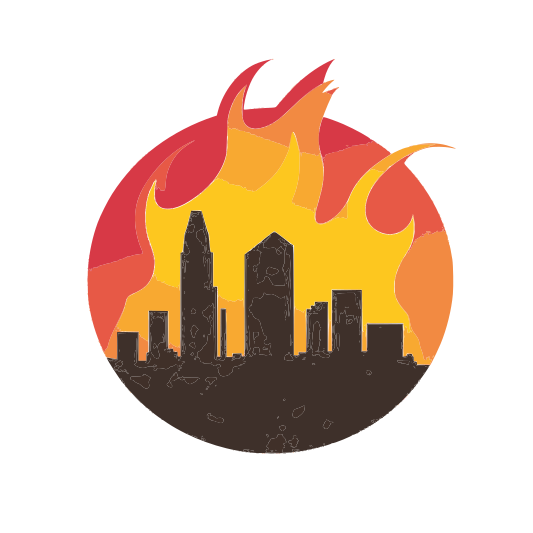A Perspective on Fighting Urban Wildfire
The trusty neighborhood fire hydrant, the anchor of fire safety and pissoir of the pooch is understood less than we might imagine.
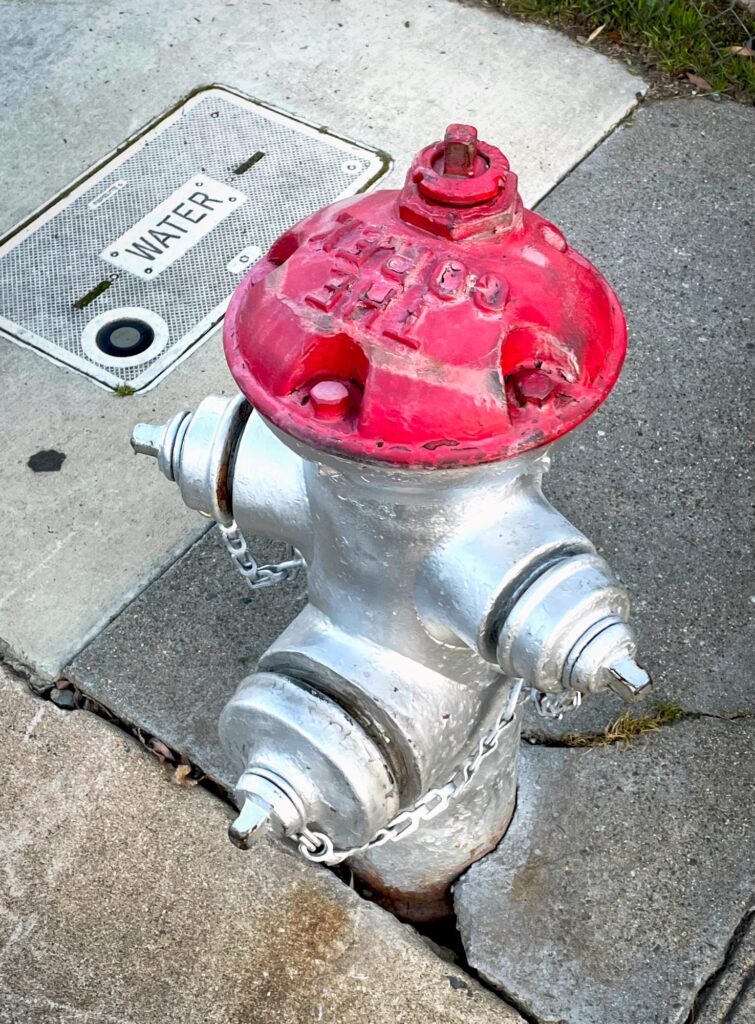
The purpose of a hydrant is to create a readily available supply of water for fighting a house fire in urban and suburban areas where a water distribution network already exists. In residential areas at least one hydrant must be within 600 feet of a dwelling to minimize the amount of hose required to access the fire. The pressure at the nozzle is created by the pumper truck and there is a limit to the length of hose that can be attached. Some areas may require more hydrants depending on the types of buildings and their usage. San Diego maintains a fire hydrant map showing locations, sizes and other relevant data.
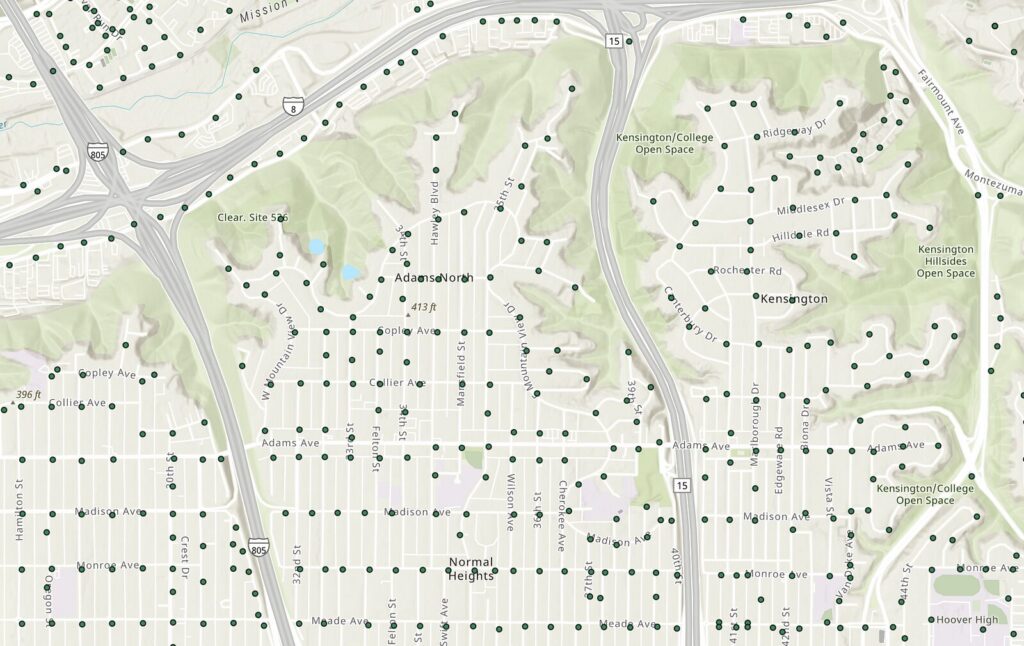
The real puzzle begins when figuring out how much water a hydrant, or multiple hydrants, can supply. Water pressure is shared across all the hydrants on a given water main and just like the shower in your bathroom, when the toilet gets flushed and the dishwasher is running you are not going to get all the shampoo out of your hair.
National Fire Protection Association (NFPA) defines the standard for water supply as “fire flow”. Each one- or two-family dwelling must have access to a minimum fire flow of not less than 500 gpm, denser construction may require fire flow to be not less than 1,000 gpm. This is one of the reasons the State of California accessory dwelling unit program supports putting one additional structure on a parcel, but not 4, 8, or even 17 as can be done under San Diego’s Bonus ADU Program.
“Fire flow is calculated based on the fire flow area of the building. The flow area is the total floor area of all floor levels of a building…” Shawn Mahoney NFPA
For San Diego, the city water facility guideline states, “…fire hydrants are located at street intersections, but no more than 450 feet apart in single-family residential areas, no more than 350 feet apart in multifamily residential and commercial areas, and no more than 250 feet apart in industrial areas.” It is common to need multiple fire hydrants to meet the required fire flow, these additional hydrants must be within 1,000 feet.
Now that we have an idea of the standards for hydrant placement and water volume, how is fire flow calculated for fighting an urban wildfire? It’s not.
The municipal water system is designed to account for a maximum of two concurrent fires and support the hydrants within 600 feet of those fires. Since the maximum size of a distribution (not transport) water main is 16″, only 4 hydrants can reasonably be used on a single main. Even a small urban wildfire can have a linear front of several thousand feet.
The Montezuma fire burned 37 acres on October 31, 2024 near San Diego State University. There were perfect weather conditions and the fire was contained after three days. Along the mile-and-a-half perimeter the 17 hydrants were supplemented by aerial tankers and helicopters.
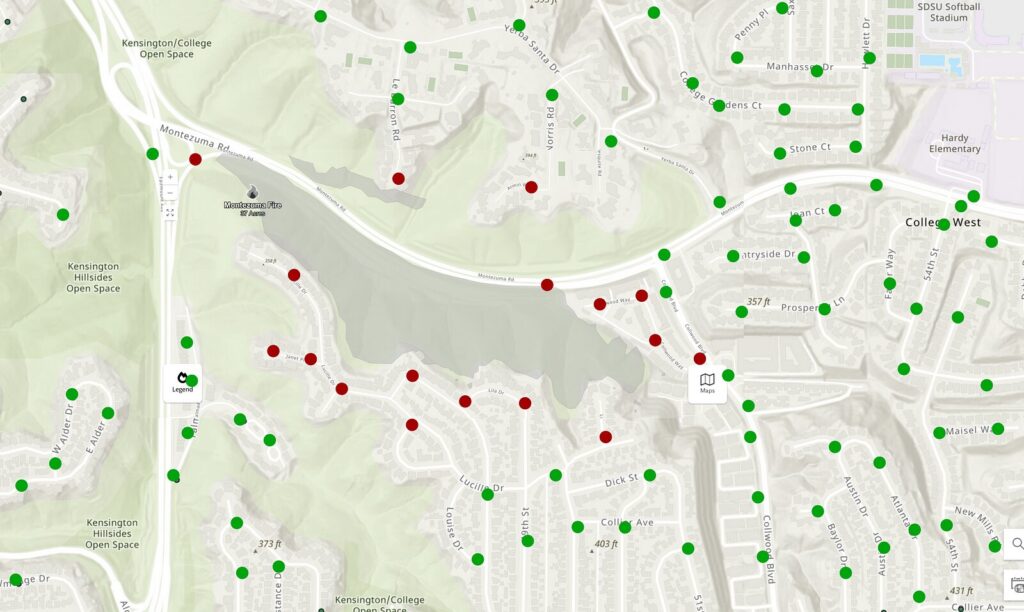
Not all 17 hydrants were used at the same time, crews moved to critical points to contain forward progress. If winds had been higher, the fire would have easily spread into the houses.
A hydrant can only deliver what it is fed and the San Diego water facility guideline states, “Acceptable sizes for distribution mains are 8-inch, 12-inch, and 16-inch only.” Unfortunately, the city is decades behind on infrastructure upgrades to make these mains compliant. The map below shows distribution mains in the mid-city area smaller than 8-inches.
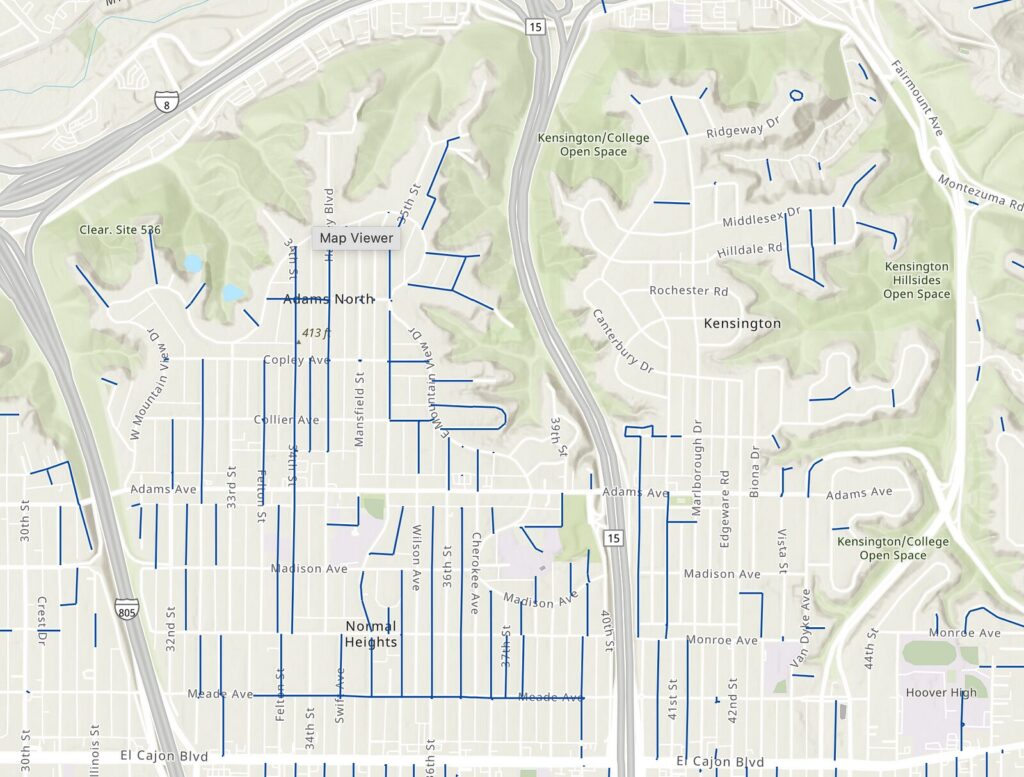
The water system feeding the hydrants contains several components to ensure constant water pressure and storage for immediate use in the area. The amount of water storage for fire fighting is typically enough for 2 concurrent house fires lasting 5 hours. Urban wildfire dramatically increases the duration into several days with multiple fronts.
Fire hydrants serve an important roll in fighting house fires but are quickly overwhelmed or exhausted when confronted with urban wildfire.
